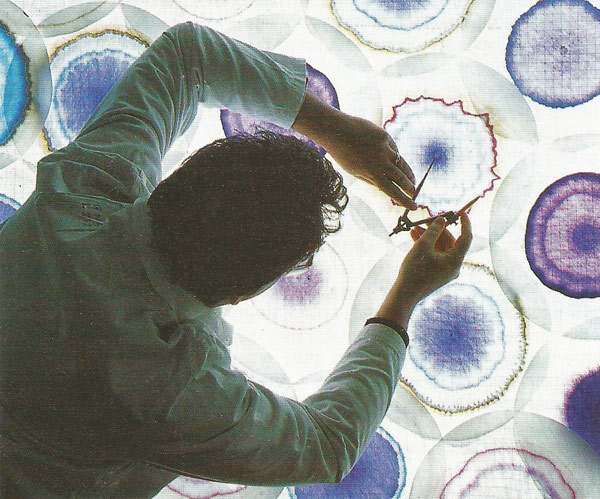paper chromatography

A scientist studying a selection of paper chromatograms of industrial dyes. Paper chromatography involves placing a small amount of the substance under investigation on a piece of filter paper, then slowly dripping a solvent into the center of the paper. The solvent then spreads out over the paper by capillary action, carrying with it the components of the substance at differing rates. The distance traveled along the paper by each component during the time of the experiment is a measure of the characteristic transport rate and may be used to identify each component.
Paper chromatography is a type of chromatography in which absorbent paper is used. The mixture to be analyzed is dissolved and a drop of the solution placed near one edge of the sheet of paper. The sheet is suspended vertically with that edge dipping into a trough of solvent. As the solvent rises up the paper by capillary action, the components in the spot move with the solvent front at different rates, depending on their composition. When the paper is dried, the components appear as a line of spots, which may need spraying with a reacting substance to color them and reveal their presence. The distance of a substance moves in a given time is characteristic of its identity.


